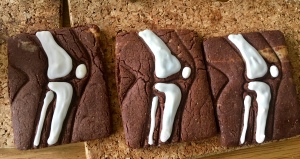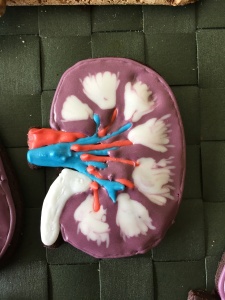
The Humble squat – we all used to be able to do it but how many of us can do it now?
If you go and see any exercise professional worth their salt then you won’t be far into the conversation as to how you can get fitter, before they mention the squat.
So, if it is such a fundamental move and we all used to be able to do it – why can’t we now?
You will see some fancy explanations about the relative weight of a toddler’s head versus their femur length but I’m going to suggest to you there are two main reasons why we can’t squat anymore.
1 – someone invented the toilet seat
2 – misguided belief by the exercise profession that your knee shouldn’t go past 90 degrees.
The explanation of point 1 also covers point 2.
What is the problem with the toilet seat? I’m not talking about the flushing water closet that Thomas Crapper introduced to us in the late 19th century. I am talking about the first Greek or Roman who thought about putting a seat above the latrine pit. Up until that point if someone needed to go to the toilet then they had to squat down. At least once every day every adult squatted right down into what we now call the ‘ass to grass’ pose.
Why squatting is better than sitting? Squatting has a lot of benefits. The first thing it does is line up your rectum. The bottom of the digestive tract is supported in the pelvis by a big sling of muscles that help seal it off by putting a big kink into it. When you squat it becomes a lot easier for this kink to be relaxed as you go to the toilet and for the rectum to be completely emptied. You can find a number of devices on the market now that aim to bring your feet up when you use the toilet. They work on the same principle. The increase in colorectal cancer can be related to the drop in use of the squatting pose (so can the increase in the price of ice creams so watch out for cause and effect in medical claims). Squatting also moves your pelvis around. Opinion is divided on whether SI joints can move and what squatting does to them but you can’t deny that squatting moves the pelvis and the lower back around. The number one cause of days off of work (after mental health) is lower back issues. Maybe if we still moved it around by squatting each day it wouldn’t be such an issue. In our groin we also have a number of large lymphnodes. Squatting compresses these lymphnodes. Some would argue that that helps the lymph fluid to circulate, recirculating that fluid around the body – might help immunity (that’s might help, in the same way that feeling good about your self because you squat each day, might help immunity. It’s impossible to perform double blind trials involving humans and movement or touch so hard scientific facts don’t really exist in this realm).
For a long time in our history we squatted to go to the toilet, some people still do. How can it possibly be wrong for our bodies to perform a function they have done for centuries. It damages some people’s knees to go into full flexion because their knees are not used to it. You should never do any exercise that hurts you but a blanket ban on full flexion of the knee joint is as daft as saying don’t flex and twist your spine at the same time. Excellent advice for ballistic movements in high speed aerobic classes but you trying wiping your ass and not doing that movement.
Blanket anything is not good – everything should be considered and, as always, listen to your body.
During the lockdown I have started a program to get me back to full squat. I haven’t been able to do it for years. I’ll let you know how I get on.



 Is this the back of someone who has suffered atrophy? Could he ever have climbed out of a pit in a death defying escape and saved the world if he had suffered atrophy? No. Batman’s super power is that his muscles do not atrophy!
Is this the back of someone who has suffered atrophy? Could he ever have climbed out of a pit in a death defying escape and saved the world if he had suffered atrophy? No. Batman’s super power is that his muscles do not atrophy! I bake biscuits. It started off as a bit of down time and then I realised it could actually be a revision tool.
I bake biscuits. It started off as a bit of down time and then I realised it could actually be a revision tool. learning process has taken place.
learning process has taken place.


 That afternoon I experienced one of the best educational experiences I have ever seen.
That afternoon I experienced one of the best educational experiences I have ever seen.


 And then Fractals – this is the mathematical idea of repeating patterns that are found everywhere in nature. That took some time to get my head around but once you are aware of it you begin to see it everywhere.
And then Fractals – this is the mathematical idea of repeating patterns that are found everywhere in nature. That took some time to get my head around but once you are aware of it you begin to see it everywhere. in the form of presents and spending money you don’t have but it is also in the form of food.
in the form of presents and spending money you don’t have but it is also in the form of food. Happy Christmas and see you in 2020.
Happy Christmas and see you in 2020.


 This is a genuine winged scapula caused by the long thoracic nerve not working. This nerve innervates the serratus anterior muscle and with it not contracting and holding the shoulder blade (scapula) to the rib cage, the scapula sticks out if pressure is put on the extended arm.
This is a genuine winged scapula caused by the long thoracic nerve not working. This nerve innervates the serratus anterior muscle and with it not contracting and holding the shoulder blade (scapula) to the rib cage, the scapula sticks out if pressure is put on the extended arm. claiming that this is a winged scapula and that you can fix it with their exercises. There exercises engage the Serratus so would pull the scapula in but you can see that the person’s scapula isn’t winging, in fact the arrow points to a depression on their back where their scapula is, over hung by the development of their Traps. Is it any wonder that people get confused.
claiming that this is a winged scapula and that you can fix it with their exercises. There exercises engage the Serratus so would pull the scapula in but you can see that the person’s scapula isn’t winging, in fact the arrow points to a depression on their back where their scapula is, over hung by the development of their Traps. Is it any wonder that people get confused. inserted between a scapula and a rib cage – this must be a problem! Surely this is winging?
inserted between a scapula and a rib cage – this must be a problem! Surely this is winging?